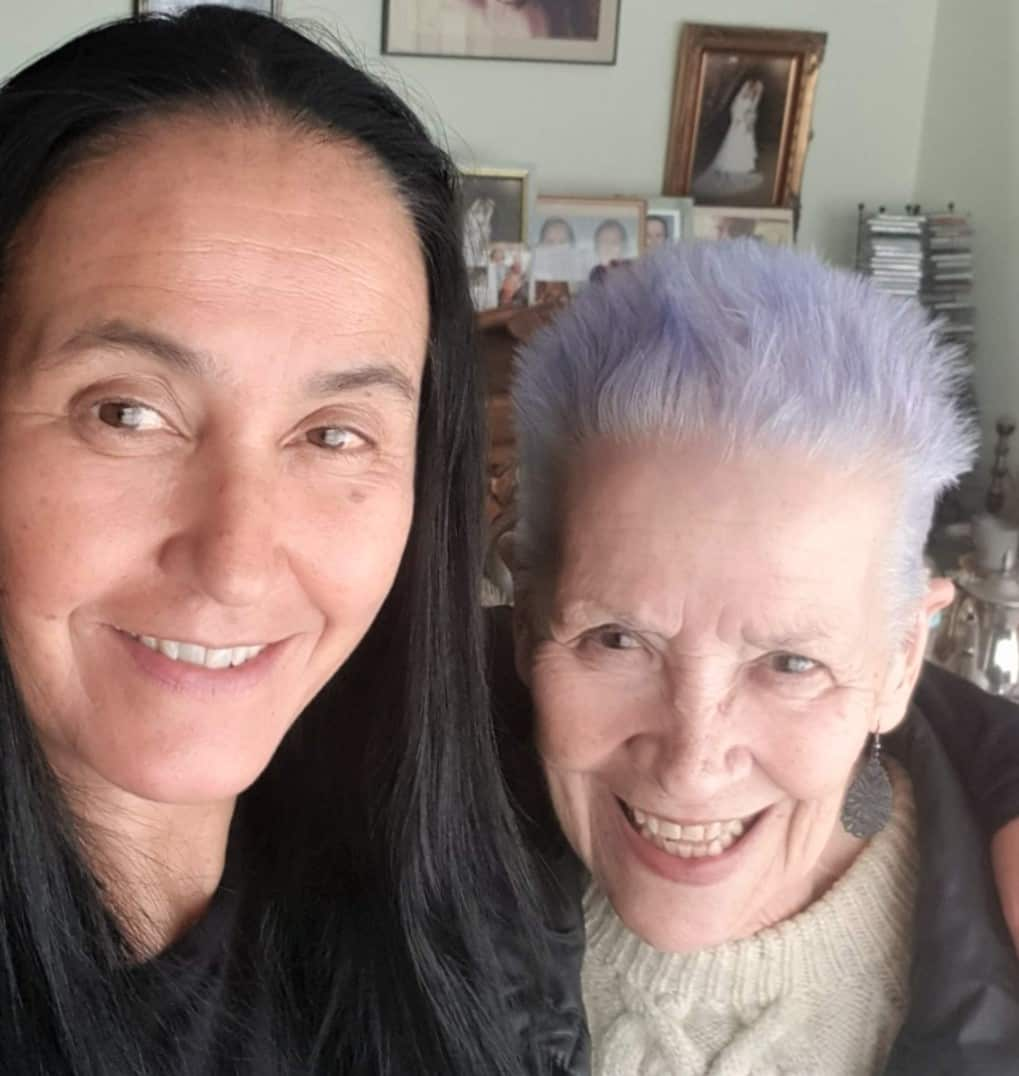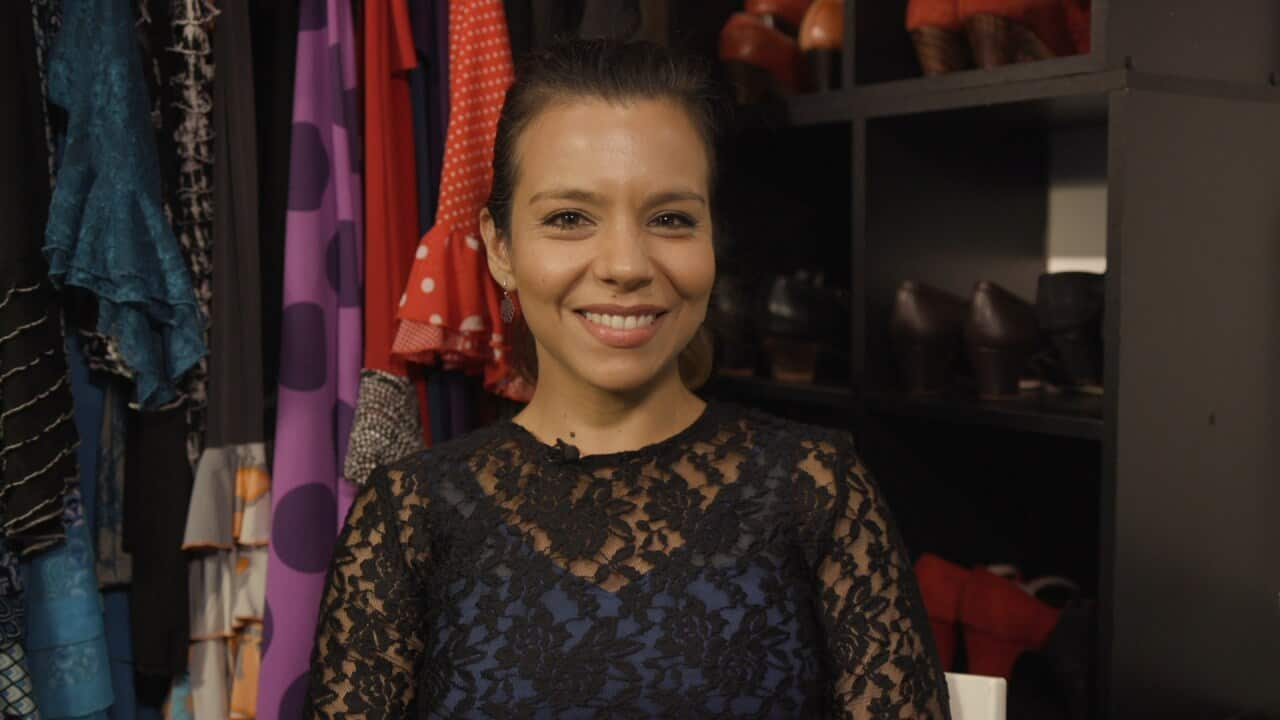Marina Tamayo has made a name as a dancer and choreographer in Australia's competitive performing arts industry. But her latest achievement is a career highlight.
She is dancing flamenco in a major feature film, Carmen. It reimagines the French opera of the same name.
"Flamenco is my cultural story. It is a pure storytelling format and the film set no boundaries, giving me full freedom to create," the 56-year-old says.
"It was a lifetime opportunity for which I'm very grateful."

Marina Tamayo in Carmen. Source: Supplied / Ben King / Goal post pictures
"It was absolutely extraordinary to film in Broken Hill," Rosemary Blight, the film's producer at Goalpost Pictures, says.
"It was the most extraordinary place, with huge landscapes and beautiful red rocks."
The story centres on Carmen, a young woman who is forced to flee her home in the Mexican desert following the brutal murder of her mother, Zila, who is also a strong and mysterious woman.
"I was able to tap into the character because I drew on the strength and resilience of my own mother," Tamayo says.
"She could not speak any English when she first arrived from Spain in the 1950s as a schoolteacher and a Spanish folk dancer."

Marina Tamayo with her brother Paul Phillips and mother Marina. Source: Supplied / Marina Tamayo
"The area around our home was underdeveloped, like swamp land. And that is where all the migrants were placed," she says.
"The Europeans found it was a good cultivating land. So, the Italians and the Greeks, the Polish and the Spanish built orchards and veggie patches and we sustained our life out there.
"And my mother protected me and fought for me, as I now fight for my daughters. And that strength becomes a dance for your life, showing that you would do anything for the people you love."

Marina Tamayo learned to dance flamenco in Spain. Source: SBS News / Sandra Fulloon
Flamenco is believed to have arrived in Spain centuries ago, with the Roma migration from India. It has evolved since to include Middle Eastern and even Celtic influences.
"Flamenco is a mix of multiple cultures, and that's what makes it universal," Tamayo says.
"Learning from [the Roma], I understood the philosophy behind why they dance, and the storytelling.
"As a displaced people, they expressed pure resilience. They were homeless, they were fighting for their rights."

Marina Tamayo teaching a dance class in Sydney. Source: SBS News / Sandra Fulloon
She draws inspiration from the resilience of her own mother Marina, who tragically died of cancer shortly before the film's release.
"At the hospice in Adelaide, I told her about the film and she asked me to show it to her. And I promised I would the next morning, hoping she would last another day," Tamayo says.
"But she didn't make it."
Tamayo still found a way to share her proudest moment with her mother.
"The hospice nurses said that when people are transitioning (from life to death), they can still hear. So, I set up the laptop and played the opening scene of the movie. And I was talking her through it."
"I hope she heard it," she says with eyes full of tears.

Marina Tamayo with her mother shortly before she died. Source: Supplied / Marina Tamayo
"During the COVID-19 pandemic, all my performances and classes were cancelled. One day, when I was cleaning out my spam folder, I saw a headline 'Carmen auditions', and I thought 'well, hang on, is this real? Or is this spam?'," she says.
"Even so, I made a phone call."
Tamayo's heritage and experience uniquely qualified her for the project, Blight recalls.
"One of the greatest moments of my life was when Tamayo walked into audition room. I did not know her, but she stood there with such truth and honesty," she says.
"The director, Benjamin [Millepied] said 'dance with no music' and it was one of those beautiful moments watching a woman dance from her understanding of what flamenco means for women all over the world."
Tamayo teaches flamenco to students of all ages and abilities through her business Flamenco Australia, running classes in schools and studios across Sydney’s north.
Student Keryn Carter says she finds dancing flamenco joyous.
"I just love it, and I feel empowered when I dance flamenco," the 63-year-old says.
"I have an absolutely joyous time and the costumes are great. Plus, it is such a beautiful dance with ancient roots."

Flamenco dance student Keryn Carter. Source: SBS News / Sandra Fulloon
"Open your mind to see something different, and learn something different," she says.
"The migration and refugee story is the same everywhere, and it has all those hallmarks of struggle and tragedy."





